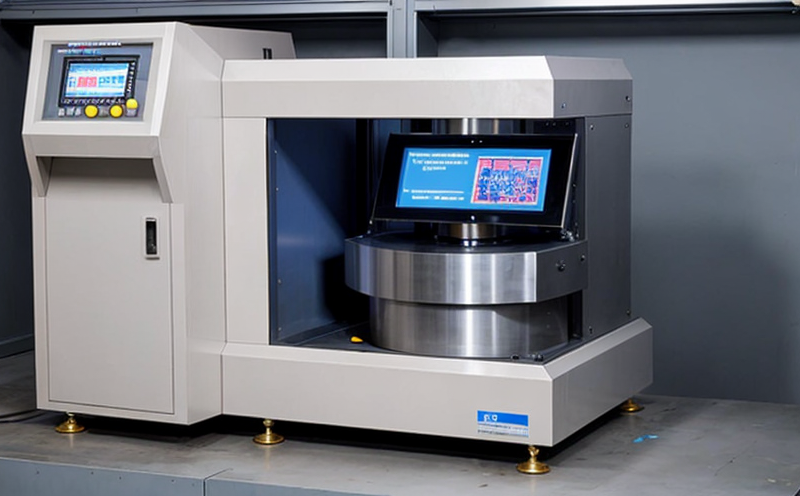ISO 5725 Accuracy and Precision in Dimensional Measurement
The ISO 5725 standard is a cornerstone of metrology and dimensional accuracy testing. This service ensures that measurements are not only precise but also accurate, aligning with the highest international standards. The primary focus is on ensuring that the results obtained from dimensional measurement tests meet the required tolerances and specifications.
The ISO 5725 standard provides a framework for evaluating the accuracy and precision of measuring instruments used in various sectors, including manufacturing, aerospace, automotive, medical devices, and more. This service plays a crucial role in quality control processes by validating that manufactured products comply with design specifications. The testing process involves detailed calibration procedures to ensure that measurement tools are accurate within specified tolerances.
The first step in any dimensional accuracy test is the selection of appropriate measuring instruments based on the part geometry and material properties. Commonly used instruments include micrometers, calipers, laser scanners, and coordinate measurement machines (CMMs). Each instrument has specific calibration requirements that must be followed to ensure accurate measurements.
Once the instruments are calibrated, the next step is specimen preparation. This involves cleaning the part surface to remove any contaminants or coatings that could affect the accuracy of the measurement. The part should also be positioned in a way that does not introduce any bias into the results. For complex parts, it may be necessary to use fixtures to hold the part securely during testing.
The actual measurement process involves taking multiple readings at different points on the part and averaging them to reduce random errors. This approach ensures that the final result is representative of the entire part's dimensions. The precision of the measurements is also important, as it affects how sensitive the test can be to detecting small deviations from the nominal size.
After collecting the data, statistical analysis techniques are applied to determine both accuracy and precision. Accuracy refers to how close the measured values are to the true value, while precision indicates how consistent the measurements are over time and between different operators. The results of these analyses provide a comprehensive evaluation of the measuring system's performance.
The service also includes detailed reporting that summarizes the findings and provides recommendations for improving measurement accuracy if necessary. This report is essential for maintaining compliance with industry standards and can help identify areas where process improvements are needed.
Why It Matters
Dimensional accuracy is critical in many industries, particularly those that rely on precise manufacturing processes. Inaccurate measurements can lead to defective products, increased production costs, and even safety issues. By adhering to the ISO 5725 standard, manufacturers ensure that their products meet the required specifications, which enhances product quality and customer satisfaction.
The precision of measurement tools is equally important. Tools that are not precise enough may produce misleading data, leading to incorrect conclusions about a part's dimensions. This can result in wasted resources and potential liability issues if defective parts reach the market.
In addition to enhancing product quality, ISO 5725 compliance also contributes to a company's reputation for reliability and integrity. It demonstrates that the organization is committed to maintaining high standards of measurement accuracy, which can be a key differentiator in competitive markets.
Competitive Advantage and Market Impact
Compliance with ISO 5725 standards provides several advantages for manufacturers. First, it ensures that products meet the highest quality standards, which is increasingly important as global competition intensifies. Customers are more likely to trust a brand that adheres to recognized international standards.
Second, adherence to these standards can help reduce costs by minimizing rework and scrap. Precise measurements allow for tighter control of manufacturing processes, reducing the likelihood of producing parts outside of specification.
Finally, ISO 5725 compliance can open up new market opportunities. Many industries have specific requirements regarding measurement accuracy, and suppliers who meet these standards may find themselves in a stronger position to win contracts.
Use Cases and Application Examples
- Aerospace: Ensuring that aircraft parts are manufactured with precise dimensions is critical for safety. ISO 5725 testing helps verify that parts meet the stringent tolerances required by aviation authorities.
- Medical Devices: The accuracy of medical devices can have significant health implications. Testing according to ISO 5725 ensures that these devices function as intended and are safe for use.
- Automotive: Automotive manufacturers rely on precise measurements to ensure that parts fit together correctly. ISO 5725 testing helps maintain this critical aspect of vehicle assembly.
| Use Case | Application Example | Measurement Tool | Tolerance Level |
|---|---|---|---|
| Aerospace Engine Parts | Manufacture of turbine blades for jet engines. | Laser scanner with sub-micron resolution. | +/- 0.01 mm |
| Medical Implants | Production of hip and knee joint implants. | CMM equipped with tactile probes. | +/- 0.05 mm |
| Automotive Steering Systems | Assembly of steering columns in cars. | Digital calipers with high magnification. | +/- 0.1 mm |
| Use Case | Application Example | Measurement Tool | Data Analysis Method |
|---|---|---|---|
| Electronics Manufacturing | Manufacture of circuit boards. | Laser micrometer. | Statistical process control (SPC). |
| Bicycle Frames | Production of high-performance bicycle frames. | CMM with color-coded tactile probes. | Control charts for variable data. |
| Sporting Goods | Manufacture of golf clubs and tennis rackets. | Digital calipers with vernier scales. | Analysis of standard deviation in dimensions. |





